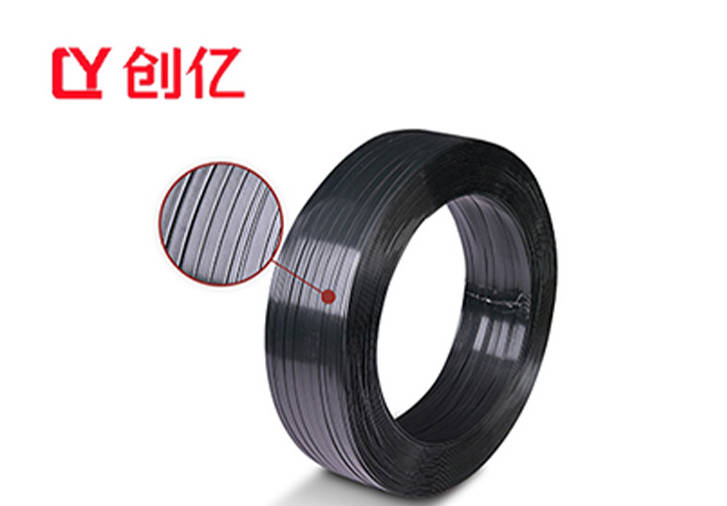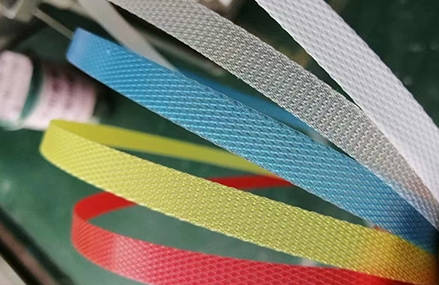Pet Strap or PP? A Deep Dive into Packaging Strength and Durability
2025-07-31
Picking the right strapping material is key to a smooth logistics process. Whether you’re tying down heavy construction supplies or bundling light retail products, choosing between PET strap and PP strap matters a lot. At Foshan Weide Chuangyi Packaging Materials Co., Ltd, we focus on crafting top-notch PET strapping solutions that fit your needs perfectly. This article explores the differences between PET and PP straps. It covers their strength, toughness, and uses. Our goal is to help you decide wisely.
Overview of Packaging Straps
Strapping is vital for keeping goods safe during shipping and storage. It holds items tightly. Knowing the materials available helps you improve your packaging process. Let’s look at why strapping matters and what materials are commonly used.
The Role of Strapping in Modern Packaging
Strapping keeps loads steady. It stops items from shifting. This ensures safe delivery for industries like construction, logistics, and retail. For example, it secures pallets of bricks or bundles of drinks. Strapping reduces damage and returns. It’s a simple but critical tool.
Common Materials Used in Strapping Solutions
Two main materials dominate strapping: PET (Polyethylene Terephthalate) and PP (Polypropylene). Each has special traits. PET is strong and tough. PP is flexible and budget-friendly. Let’s dive into their features next.
Characteristics of PET Strap
PET straps are a top choice for heavy-duty packaging. They offer great strength and durability. At Foshan Weide Chuangyi, we design our PET straps to handle tough jobs with ease.
Material Composition and Physical Properties
PET straps come from polyester. They boast high pulling strength, often over 500 kg. They stretch very little. This makes them lighter and safer than steel. Yet, they perform just as well in many cases.
Performance in High-Tension Applications
PET straps shine in tough situations. Think of securing heavy pallets. They hold tension well over time. They don’t stretch much. This keeps loads stable during long trips or storage. You can count on them to stay firm.
Environmental Benefits and Recycling Potential
Our eco-friendly PET strapping is fully recyclable. It cuts down waste. It supports green goals. PET’s toughness means you replace it less often. This lowers its impact on the environment.
Features of PP Strap
PP straps are great for lighter tasks. They may not match PET’s strength, but they have their own perks. They’re widely used for good reasons.
Structural Attributes and Flexibility
PP straps are made from polypropylene. They’re light and bendy. This makes them perfect for jobs needing flexibility. They absorb shocks during shipping. This protects delicate items.
Suitability for Light to Medium Duty Packaging
PP straps work well for bundling consumer goods. Think electronics or packaged foods. They don’t need heavy strength. Their ease of use makes them great for hand-strapping tasks.
Cost-Effectiveness and Availability
PP straps cost less than PET. They’re a smart pick for businesses with lighter needs. You can find them almost anywhere. This makes them easy to get for big operations.
Comparing Strength and Durability: PET vs. PP
To choose between PET and PP, you need to know how they perform. Let’s compare their strength and toughness in key areas.
Tensile Strength and Load Retention Over Time
|
Feature |
PET Strap |
PP Strap |
|
Pulling Strength |
Up to 1000 kg |
Up to 300 kg |
|
Stretchiness |
10-15% |
20-25% |
|
Load Holding |
Stays tight for long periods |
May loosen over time |
PET straps are stronger. They hold loads better. This makes them perfect for heavy items needing steady tension.
Resistance to Impact, UV, and Temperature Variations
PET straps handle UV rays and temperature changes well. PP straps can weaken in strong sunlight or extreme heat. PET stays reliable in tough outdoor conditions or storage.
Long-Term Performance in Storage and Transit Conditions
PET straps keep their shape over time. They resist stretching or loosening. PP straps work fine for short-term use. But they may stretch after a while. This can make loads less stable.

Application Scenarios for Each Strap Type
Different industries have different needs. The right strap depends on the job. Let’s see where PET and PP straps perform best.
Industries That Benefit from PET Straps
PET straps are ideal for heavy-duty tasks. Their strength makes them a top pick.
Construction Materials and Heavy Goods
In construction, PET straps secure bricks, tiles, or lumber. Their high pulling strength keeps pallets steady during transport or storage. You can trust them for heavy loads.
Beverage Bottling and Palletizing
The beverage industry uses PET straps for bottles and cans. They resist tension loss. This ensures loads stay secure over long supply chains.
Sectors Where PP Straps Are Preferred
PP straps suit lighter tasks. Their flexibility and low cost make them popular.
Consumer Goods Packaging
PP straps bundle electronics or household items. They keep lightweight products safe for retail shelves. They’re simple and effective.
Carton Sealing and Lightweight Bundling
PP straps seal cartons or tie small packages. They’re great for e-commerce or retail. They’re affordable and get the job done.
Cost Considerations Beyond Price per Roll
PP straps may seem cheaper at first. But looking at long-term costs shows PET’s true value.
Lifecycle Cost Analysis: Durability vs. Replacement Frequency
PET straps last longer. You replace them less often. This saves money over time. PP straps are cheaper upfront. But they may need re-strapping due to stretching. This adds costs.
Operational Efficiency and Downtime Reduction
PET straps work smoothly with automated systems. They reduce downtime from strap failures. Their steady performance saves time and labor. This boosts your workflow.
Compatibility with Strapping Equipment
Both PET and PP straps work with various strapping tools. But their needs differ slightly.
Manual, Semi-Automatic, and Automatic Machines
PET straps fit manual, semi-automatic, and automatic machines. They’re versatile for many setups. PP straps are often used with hand tools. Their flexibility makes them easy to handle.
Machine Settings Required for PET vs. PP
PET straps need higher tension settings. They also require strong sealing due to their toughness. PP straps need less tension. This prevents overstretching. Adjusting machines correctly is key.
Safety Implications in Handling and Use
Safety matters when picking strapping materials. Both options have safety features, but there are differences.
Operator Safety During Application and Removal
PET straps have smooth edges. This lowers the risk of cuts. PP straps are usually safe. But some may have sharper edges. It depends on the supplier.
Edge Sharpness, Recoil, and Breakage Risks
PET straps have low recoil. They rarely break. This makes them safer for workers. PP straps can snap if overstretched. This poses a small risk during use.
Sustainability Factors in Strap Selection
Green practices are a big deal in packaging today. Both PET and PP have eco-friendly options. But their impacts vary.
Recyclability of PET vs. PP Materials
Our eco-friendly PET strapping is 100% recyclable. It reduces waste. It aligns with green goals. PP straps can be recycled too. But they’re often used in single-use cases, so recycling rates may be lower.
Carbon Footprint Across the Supply Chain
PET straps last longer. They’re recyclable. This cuts their carbon footprint. PP straps may need more production and replacement. This can increase their environmental impact.
Foshan Weide Chuangyi Packaging Materials Co., Ltd: A Trusted Supplier
Foshan Weide Chuangyi Packaging Materials Co., Ltd. is a subsidiary of Foshan Xinmingyi Packaging Materials Co., Ltd. At Foshan Weide Chuangyi Packaging Materials Co., Ltd, we take pride in offering top-quality strapping solutions. Our experience makes us a reliable partner for businesses worldwide.
Commitment to Quality Manufacturing Standards
We follow strict quality rules. Our PET straps meet global standards for strength and reliability. You can trust our products to perform.
Product Range Focused on High-Performance PET Straps
Our PET strap series is built for tough jobs. It delivers unmatched toughness and performance. We design it to meet your needs.
Global Reach with Reliable Customer Support
We serve customers worldwide. Our team offers fast, tailored support. Contact us to talk about your packaging needs. We’re here to help.
Conclusion
Picking between PET and PP straps depends on your packaging needs. PET straps offer great strength and toughness for heavy jobs. PP straps provide flexibility and low cost for lighter tasks. At Foshan Weide Chuangyi, we suggest PET straps for businesses wanting long-term reliability and green benefits. Think about your needs. Look at long-term costs. Choose the strap that fits your goals.
Frequently Asked Questions
Q1 What is the main difference between PET strap and PP strap?
A1 PET straps are stronger and tougher. They’re great for heavy tasks like construction or beverage palletizing. PP straps are more flexible and cheaper. They suit lightweight bundling or carton sealing.
Q2 Can I use the same machine for both PET and PP straps?
A2 Yes, most strapping machines work with both. But PET straps need higher tension and strong sealing. PP straps use lower tension to avoid stretching. Adjust your machine settings for best results.
Q3 Is PET strapping environmentally friendly?
A3 Yes, our PET strapping is fully recyclable. It supports green practices. It reduces waste and helps you meet sustainability goals.

